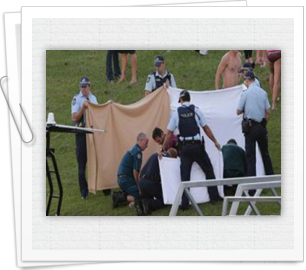Online CPR Certification Blog
Averting a dangerous emergency with CPR
Date: September 13th, 2013
 Without oxygen, vital organs like the brain only have very few minutes to survive before a serious damage can happen. As such, when a person’s heart beating or breathing stops, it is essential to know how you can save a life. CPR is a very simple but highly important procedure which everyone must know how to perform.
Without oxygen, vital organs like the brain only have very few minutes to survive before a serious damage can happen. As such, when a person’s heart beating or breathing stops, it is essential to know how you can save a life. CPR is a very simple but highly important procedure which everyone must know how to perform.
Signs of a cardiac arrest and heart attack
Cardiac arrest refers to an emergency situation where heat beating stops and can result from respiratory arrest where functioning of the lungs fail, drowning or choking, a traumatic experience or being electrocuted. In addition, the stopping of the heart can also be caused by an extremely slow or irregular heartbeat. Some of the signs that should warn you of a potential cardiac arrest include:
- No pulse.
- Being unconscious
- Not breathing
- No blood pressure
The difference between a heart attack and a cardiac arrest is that during a heart attack, the heart doesn’t stop beating completely. A cardiac arrest is usually a result of a heart attack. Normally, a heart attack results from a blockage which hinders circulation of blood via the heart. Common symptoms of heart attack are:
- Chest pain which feels like a heavy, squeezing, tight and sometimes a full chest sensation
- Chest pain which subsides and then recurs
- Feeling discomfort or pain in the arms, neck, jaw, back or stomach
- Sweating
- Feeling nauseous or vomiting
What CPR does
The cardiopulmonary resuscitation procedure is very helpful in getting oxygen circulated via the heart to vital brain cells. However, CPR is only recommended on unconscious people with no breathing sounds or heartbeat. If the patient has a heart attack but still conscious, performing a CPR will only result in more harm. During an emergency situation, conventional CPR can help in saving the patient. Before you attempt the procedure however, call 911 for help or request someone to do it for you as you start the CPR. Having emergency medical personnel come to your aid is important but in the mean time, you should concentrate on CPR to improve the chances of the patient to survive and minimize the risk of a serious brain damage. Always remember that acting as quickly as possible is important as damage can occur to the brain of the person when breathing has stopped or when heartbeat is absent even for four minutes. After contacting 911, confirm that the patient is unconscious before you try resuscitating him. There are simple instructional classes that can help you learn how to perform CPR for adults, infants and children right away. These classes are covered in just one session and will only take you no more than 3 hours and are offered often by Red Cross, community centers and by local hospitals where you are taught mannequin techniques by certified CPR personnel.